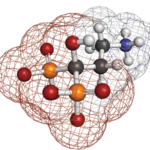A single injection daily of zoledronic acid may improve bone mineral density (BMD) in frail elderly women in long-term care facilities, a new randomized controlled trial shows. However, the clinical importance of the improvement, observed over a two-year period, remains unclear, Dr. Neil M. Resnick, of the University of Pittsburgh, told Reuters Health in a telephone interview.
“It looks as if the results on the bone turnover are as good as they would be in a less frail, less advanced-age group, so that is all good news,” Dr. Resnick said. “What we don’t know now is whether or not that will translate to a reduction in fractures and their consequences.”
Dr. Resnick and colleagues are now planning another trial to determine if the drug treatment does actually protect frail older women against fractures. “We were very pleased to see that it is safe, it is effective on the intermediate outcome, and that now sets the stage for the larger trial, which we now believe is justified,” he said.
Some 85% of elderly people living in institutions have osteoporosis, Dr. Resnick and his team note in an article online April 13 in JAMA Internal Medicine, and their risk of bone fractures is eight- to nine-fold higher than that of their community dwelling peers. But such individuals are usually not treated and not included in trials of osteoporosis medications, they add.
In the Zoledronic acid in frail Elders to STrengthen bone (ZEST) study, 181 women 65 and older with osteoporosis living in nursing homes and assisted-living facilities received a 5-mg daily dose of zoledronic acid or placebo plus calcium and vitamin D supplementation. The researchers did not exclude participants with cognitive impairment, immobility, and multimorbidity.
Over two years, the researchers found, total hip BMD increased by an average of 3.9% in the women who received study medication, while total spine BMD increased by 3.6% (P<0.01 both). However, the zoledronic acid group had a higher rate of fractures than the placebo group (20% versus 16%), and a higher mortality rate (16% vs. 13%, OR 1.24).
While the percentage of patients who had a single fall during the study period was not significantly different between the two groups, 49% of the zoledronic acid group had multiple falls versus 35% of the placebo group. After adjusting for baseline frailty, this difference was no longer statistically significant. Much of the difference between the two groups was due to the fact that the zoledronic acid participants were frailer at baseline, on average, than the placebo group, Dr. Resnick said.

